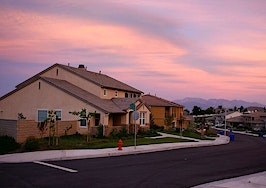Nationwide, rent for a typical single-family home surged 9.3 percent in August, notching a year-over-year increase in growth unparalleled since at least 2005, according to CoreLogic’s latest Single-Family Rent Index, released Tuesday.
The nearly double-digit leap in rent growth eclipsed the year-over-year growth of 2.2 percent tallied in August 2020. Both 2021 and 2021 experienced astronomical price growth across rental and non-rental housing due to heightened demand and an inventory shortage, according to CoreLogic.

CoreLogic
“Converging economic trends are driving a surge in single-family rent prices, and consumer confidence has driven an uptick in demand for both renters and buyers,” Molly Boesel, principal economist at CoreLogic, said in a statement.
Higher-end homes worth 125 percent or more of an area’s median price saw the most growth at 10.5 percent from June 2020. Higher-middle priced (100 to 125 percent of an area’s median home) properties grew by 9.2 percent while lower-middle priced (75 percent to 100 percent of the regional median) increased by 8.1 percent. Lower-priced homes (worth less than 75 percent of an area’s median price) grew the least but, at 6.1 percent growth, still increased at a level sure to be felt by anyone struggling financially or trying to break into homeownership for the first time.

CoreLogic
In fact, unfettered growth is creating affordability challenges and widening the gap between those who own homes and those who don’t.
In some cities, the situation has reached unprecedented levels. Renting the same asset class in Miami now costs 21.4 percent more than it did during the same period last year. While Miami surpassed all other cities in rent growth, Phoenix and Las Vegas came close at 19.2 and 15.4 percent, respectively.
Boston, which was heavily impacted by the exodus of students amid the COVID-19 pandemic, experienced its first increase in rent prices following 14 months of declines.
“Meanwhile, consumers continue to relocate as they return to in-person work and school,” Boesel said. “The ongoing preference toward more living space — and slim for-sale inventory — is forcing would-be buyers back into renting, putting significant strain on the single-family rental market.”









